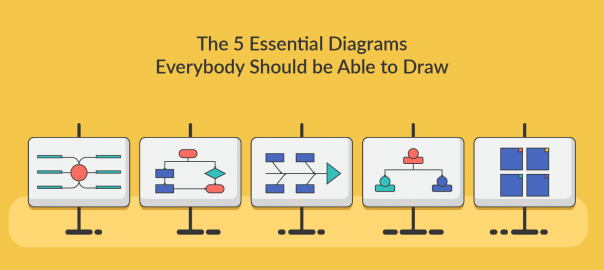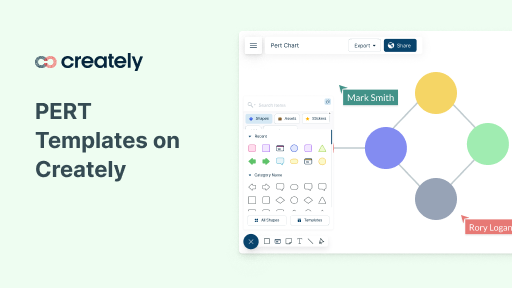Every business has its own problems, big and small.
A problem in your business can be an opportunity for the business to grow or can be the setback that leads to failure. It all depends on how you embark on problem-solving.
A good way of preventing the occurrence of undesirable things is by proper analysis of the business situation, identification of the root causes and solving the situation. Hence the need to have an efficient and effective cause and effect analysis. Here we offer you a clear guide on how to go about it.
How to Do a Cause and Effect Analysis
Cause and effect analysis is also known as a fishbone diagram. It was developed by Professor Kaoru Ishikawa, a pioneer professional in the field of quality management in the 1960s.
The diagram is called fishbone as its final look is in the form of a fishbone. It was initially used for quality improvement but it can also be helpful in analyzing business processes through the identification of its causes and hindrances, as well as on ways to improve it.
The cause and effect analysis basically involves two key steps which are looking backward and looking forward.
- In looking backward, the analysis focuses on identifying areas in which mistakes were made or money was lost. It looks into what had happened before. In identifying where the issues are, you are able to work towards avoiding the problem in the future. Another advantage of this is that, you’ll be able to replicate a positive outcome.
- Looking into the future and planning for it, the analysis seeks to find workable solutions that are to be implemented in the future and build on the future success of the business. This analysis enables you to determine your future outcome by planning what to do now to achieve it.
This method is unique in that it encourages creative thinking as well as brainstorming in the process of breaking down issues and aligning them in the process of finding its solutions.
Among the key advantages of this method is that it ensures that you don’t seek out to solve the wrong problems, it also ensures that you solve the problem well enough for it to go away.
Step 1: Problem Identification
The way to use this tool is very simple. You first need to identify the problem area that needs analysis. A good way to do this is by giving a brief description of the current business situation and the consequences as well as the reasons for why they occurred.
Here you can replace the problem with a goal that you want to achieve. For instance, high profitability. You need to be very specific about the problem that you’re facing as this forms the basis of your analysis. If the identification is wrong, then the analysis also tends to be wrong.
You should also identify the people involved as well as what the exact problem is and how it occurs. For example, low productivity due to absenteeism especially in the production department, which includes production personnel and the line manager, for the period from January to November 2017.
Step 2: Main Problem Causes
The next step is identifying the main causes of the problem, for example, the people, the procedures your business utilized as well as the materials or equipment. Here, you will need to do a lot of brainstorming to come up as many reasons as you possibly can.
You can use various models to help you identify as many problems as you can in a clear manner. For example, the McKinsey 7S Framework which includes, Strategy, Systems, the business Structures, Shared values of the business, Staff, Skills, and Style.
Step 3: Identify Plausible Sub-causes of the Main Causes
Thereafter, you can narrow down to further plausible causes of the main problems that you’ve listed. This is important for the problem-solving stage of analyzing the diagram, as you will know what to do exactly to rectify the situation. This can include issues like wrong norms and values that could be as a result of poor training of employees.
Step 4: Analyze the Diagram
By now, your diagram should be showing all the main and minor causes that you’ve thought of.
Depending on how complex the information is, you can do a much deeper investigation on the causes. This can be by conducting a survey as well as drawing up questionnaires.
For example, you can ask your employees to fill in a survey on how much they understand the products you sell in your business. The information you get from this will help you build upon areas of training in order to address the problem of lack or insufficient knowledge.
From here, a corresponding step is developing an action plan with clear priorities that can be implemented immediately. This is made simple as the plans can comprise of actions to solve the subproblem causes.
For the action plan to be effective, it needs to be clear and to be executed aggressively. For example, a sub cause like lack of staff morale can be turned into an action plan, which will be giving incentives for staff motivation, hence, improved productivity and in turn higher profitability which was the main goal.
Ready to Use Cause and Effect Analysis in Business Problem-Solving?
The cause and effect analysis uses brainstorming and critical analysis by way of visual representation to enable problem-solving.
The main problem is drawn out on the left while the main causes are drawn out an extension of the problem. This then calls for a look at the sub causes which are written out as branches of the main problems.
Various models are also used as a guide to identifying the problem-causes. The models look into various business elements including, the people relation the processes, the systems and equipment use, the management as well as the general organizational structure.
Among the advantages of this analysis method include correct identification of problem-causers hence proper problem-solving, better visualization and hence the effectiveness of the problem-solving process.
Would you like to try drawing up your own Fishbone Diagram?
BIO: Lori Wade is the content writer and a career specialist for college students. She is a content marketer, sharing experience in writing, education, and self-development in her publications, for example, https://eliteessaywriters.com/blog/toefl-essay-topics/. Connect with her on Facebook and follow her on Twitter.








Thanks for sharing your thought! Helps me a lot to do the same thing in my company. I agree that before you decide what o plan you need to have to weigh its cause and effect.